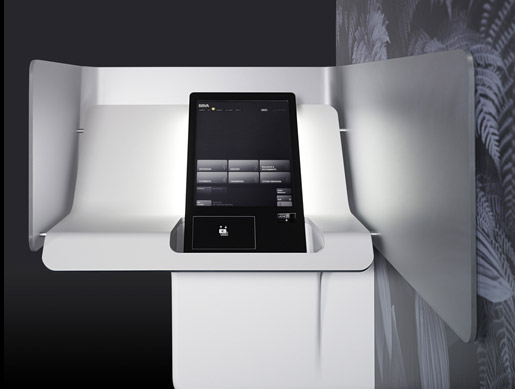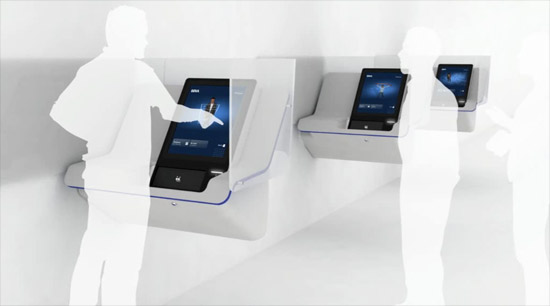
Spanish bank BBVA has unveiled an impressive new design for an ATM, which it is calling the future of self-service banking.
This new ATM is to the cash machine world what the iPhone was to mobile phones; a sleek design incorporating a touch screen and developed to do much more than simply dispense cash, whilst at the same time being simple to operate for the user.
BBVA claim that it has been “built from the user up, rather than component down”:
In early 2007 the Spanish bank BBVA asked IDEO to re-think their self-service channel from scratch. The question was not how to further automate the teller, but rather how to humanize the machine.
We started with a blank slate by really listening carefully to people talking about their banking experience; we observed subtle clues and behaviors that spoke to unmet needs when using machines.It took 2 years of time and a team of committed companies to develop this ATM.
In 2009 the first pilot units have been installed, while BBVA prepares
to roll out the ATM across its Spanish branches.
It’s certainly an interesting looking machine – one of the most striking features is the fact that it is intended to be installed at 90 degrees to the typical ATM, reducing the chances of someone watching you enter your PIN over your shoulder or being nosey over your account balances.

The touch screen with a variety of keyboard layouts  means that future functionality could be implemented more easily than on a standard ATM with just a few buttons and a basic screen. For example, once you’re about to withdraw money, you could tag the transaction which could then be shown on statements or online.
It’s not clear whether this design is intended to be used in branch only or for installing outside, but it will be interesting to see whether it’s sturdy enough to withstand the wear and tear that normal cash machines get, especially on a Friday night in your average UK town.
View a video of the BBVA ATM in action.
5 units are currently in use, with more being rolled out throughout Spain in 2010.